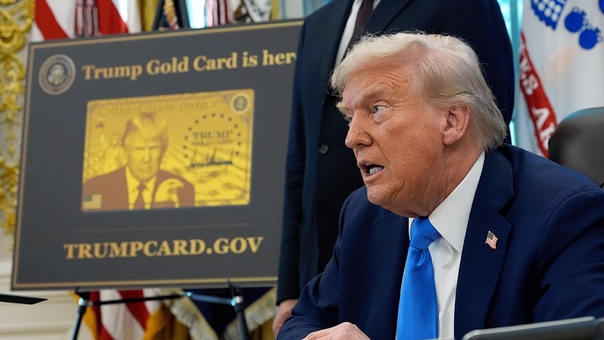Understanding the foreign tax credit: A comprehensive guide for US taxpayers abroad

Years of careful saving abroad can lose their shine when the same income is taxed twice – once overseas and again by the IRS. That moment of frustration has a fix, known as, foreign tax credit, which bridges two tax systems, cutting what you owe to the IRS and protecting the value of your foreign income. From a single dividend to complex overseas pay, it helps you keep more of what you’ve earned while staying fully compliant.
In this article brought to you by Taxes for Expats, your trusted resource for accurate foreign tax outcomes, you will find in detail:
- Eligibility, what taxes qualify, and the de minimis option that lets many filers bypass the limit when passive taxes are $300 single or $600 joint.
- How the limit works by category, the simple formula that caps the credit, and the carryback for 1 year, with a 10-year carryforward tracked on Schedule B.
- What happens after a foreign tax refund or assessment, how to report a redetermination on Schedule C, and when Form 7204 is needed for contested taxes.
- New season notes for 2025 filing work, including the latest draft instructions and ongoing transitional relief under Notices 2023 55 & 2023 80 that preserve pre-2022 creditability rules.
- OBBBA change that raises the indirect FTC on Net CFC Tested Income to 90% for corporations and for individuals who make a section 962 election, effective for tax years beginning after December 31, 2025, under H.R. 1 Public Law 119 21.
Learn how our expert team turns these complex rules into real savings, and reach out today to make your expat taxes simple, accurate, and stress-free.
What is the foreign tax credit?
Ever wonder how US citizens abroad avoid paying tax twice on the same money? The foreign tax credit gives Americans abroad a way to offset US tax when they've already paid taxes on foreign income in another country.
So, what exactly is it? According to the IRS, the foreign tax credit is a nonrefundable credit that reduces the amount of US income tax owed by the amount of income tax paid or accrued to a foreign country on foreign source income that is also subject to US tax. It’s the government’s way of preventing double taxation and promoting fair treatment for citizens who live or earn abroad.
To make it more relatable, consider Josh, single, who lives in Germany and receives a $1,000 dividend. German withholding is $150, shown on a 1099 DIV. He has no other foreign income. Because the amount is under 300, it is passive, and it is reported on a payee statement, Josh may claim the $150 foreign tax credit on Schedule 3 and skip Form 1116. If any condition fails, he files Form 1116, and the cap applies: FTC limit = US tax before credits × (foreign source taxable income ÷ worldwide taxable income).
NOTE! Choosing a deduction on Schedule A is an alternative, but IRS guidance generally favors the credit when available.
Who and what qualifies for the FTC
Knowing whether you qualify for the credit starts with a few clear conditions that define eligibility. These rules establish the criteria for eligibility to claim the benefit and outline how the credit applies to income earned abroad.
- The filer must be a US citizen, a resident alien, or, in limited cases, an estate or trust that faces tax on the same income both abroad and in the United States.
- There must be a foreign source of income that is also taxable under US law – income excluded under the foreign earned income exclusion does not count.
- The tax must be a legal and actual obligation paid or accrued to a foreign government, and it has to qualify as an income tax or a tax in lieu of one under sections 901 and 903.
- A choice must be made each year between claiming the credit or taking a deduction for foreign taxes – both cannot apply to the same payment.
- Most individuals calculate the credit on Form 1116 and report it on Schedule 3 of Form 1040, though small amounts of qualified tax (up to 300 for single filers or 600 for joint filers) can be claimed directly without Form 1116 when reported on a payee statement.
When it comes to what actually qualifies, only certain kinds of foreign income are eligible for the credit. These are earnings that both countries treat as taxable and that show up in your US gross income:
- Wages and self-employment income taxed in the country where the work is performed and included in US taxable income.
- Interest from non-US payors that is taxed abroad and reported on your US return.
- Dividend payments from foreign corporations, when the tax imposed by that country meets the credibility tests.
- Royalties or rents from property located outside the United States and taxed under local law.
- Profits from an active foreign branch that are not excluded and are reported in the proper Form 1116 category.
Other taxes simply don’t qualify. They’re not based on income, or they buy a specific benefit from the foreign government. These exclusions comprise a concise yet important list that helps prevent costly mistakes.
| Common exclusion | Why it is not creditable |
|---|---|
| Value-added tax or GST | Consumption tax, not an income tax |
| Sales or gross receipts tax not in lieu of an income tax | Based on turnover, not realized net income |
| Real property or wealth taxes | Based on assets, not income |
| Social security or payroll contributions | Not an income tax under sections 901 and 903 |
| Penalties, interest, and similar charges | Not a tax for credit purposes |
| Taxes paid for a specific economic benefit or by a dual capacity taxpayer | Treated as a payment for a benefit, not a creditable income tax |
| Taxes tied to countries in a section 901(j) sanction period | Credit barred during the sanction period |
These exclusions are set out in Publication 514 & Reg. 1.901-2 and 1.901-2A and the regulations that define a foreign income tax and specific economic benefit. Keeping these items out of a tax return helps avoid amended filings and foreign tax redetermination issues later.
How the foreign tax credit applies in the United States
The foreign tax credit reduces your US bill when the same earnings face tax in another country. You claim it on your tax return using a simple de minimis path for small passive taxes or Form 1116 for everyone else.
Only income that counts as foreign source under US rules enters the calculation, and the credit cannot exceed the category limit for that year. If tax was paid on foreign income and your US limit is lower, the allowed credit stops at that lower amount. A modest dividend or bank interest reported on a 1099 can qualify for the $300 or $600 no Form 1116 election when all conditions are met. You may instead choose a deduction on Schedule A, although the credit is usually more valuable for most expats.
FTC carryover & carryback
When foreign taxes are higher than the US limit, the unused amount still holds value. Rather than losing it, taxpayers can apply that balance to another year, using carryback and carryforward provisions that keep things equitable across time.
- Carry back the unused amount to the prior tax year.
- Carry forward any remaining credit for as many as ten future years.
- Keep records by category on Schedule B of Form 1116.
- Adjust later filings if a foreign audit or refund changes the taxes you paid.
Calculating the credit isn’t as complicated as it looks once you know the rhythm. The IRS uses a simple ratio that keeps things fair between the US and foreign tax systems.
- Start with your foreign source taxable income and determine the category it belongs to.
- Calculate your total US tax on all income.
- Apply the ratio of foreign income to total income to find the allowable limit.
- Compare that number with the actual foreign taxes paid and take the smaller figure as your credit.
This formula ensures the credit matches your real exposure, preventing double taxation without exceeding what would be owed in the United States.
Step-by-step guide to claiming the foreign tax credit
By now, you know what the foreign tax credit is and why it matters for avoiding double taxation, so claiming it simply means putting those rules into action with a few structured steps and the right documentation.
Step 1: Decide whether to take a credit or a deduction, since the credit reduces US tax dollar for dollar while a deduction only lowers taxable income and requires itemizing.
Step 2: Check if you can skip Form 1116 by using the small-amount election when qualified foreign taxes are not over $300, or $600 for a joint filing, and all amounts are passive and reported on payee statements; enter the figure directly on Schedule 3 line 1. A dividend reported on Form 1099-DIV typically fits this passive category rule.
Step 3: Gather proof of taxes paid or accrued, including payee statements like Forms 1099-DIV or 1099-INT, foreign tax receipts, and any local assessments that show dates and amounts, and keep them with the file you attach to your records.
Step 4: Sort everything by category and country, and identify the foreign source for each item so you can apply the limitation and sourcing rules correctly.
Step 5: Compute your foreign tax credit limit and compare it with the qualified taxes; if taxes exceed the limit, carry back one year and carry forward ten years within the same separate category using Schedule B.
Step 6: File the claim on your tax return by attaching Form 1116 for each applicable category, or make the small-amount election and report it on Schedule 3 line 1 without the form.
Step 7: Coordinate with any exclusions, because foreign income excluded under Form 2555 or the housing exclusion cannot also generate a credit, and related foreign taxes must be removed from the calculation.
Step 8: After filing, stay alert for any changes to your foreign tax situation. When a foreign tax is refunded, re-assessed, or otherwise adjusted, report it as a foreign tax redetermination on Schedule C (Form 1116) for the year you’re filing. If a tax is still being contested, you can choose to file Form 7204 to make a provisional FTC election, which allows you to temporarily claim the credit while the dispute is pending and automatically extends the IRS assessment period until the contest is resolved.

Refundability and the nonrefundable nature of the FTC
Remember Josh, the expat in Germany who received a $1,000 dividend with $150 of German tax withheld? After claiming that foreign tax credit on Schedule 3, he wondered whether any leftover credit could turn into a refund from the IRS a question many Americans abroad ask at tax time.
Well, the foreign tax credit is not refundable, meaning it can only reduce your US tax liability to zero, but never go below it. When qualified foreign taxes in a category exceed your US liability, you generally carry them back one year and carry them forward ten years, with running balances tracked on Schedule B (Form 1116). Those unused amounts remain separated between passive category income and general category income, and coordination with Form 2555 for the foreign earned income exclusion is required by Pub 514, while later refunds or assessments are reported on Schedule C (Form 1116).
So, for Americans like Josh – the answer is clear: the foreign tax credit saves you from double taxation, but it’s a reduction, not a refund.
What are the limitations of the FTC
Think of the foreign tax credit limit as the IRS’s way of keeping the scales balanced. It ensures that your high-taxed income in one country doesn’t unfairly offset low-taxed income in another, preserving fairness while still preventing double taxation.
- Passive category income such as most dividends and interest
- General category income including wages and business profits
- Foreign branch category income from a qualified foreign branch
- Section 951A category (GILTI) for certain CFC shareholders
- Section 901(j) income tied to sanctioned countries
- Income re-sourced by treaty under an applicable tax treaty
- Lump-sum distributions from certain pension payouts
Each type of income sits in its own basket, and your allowable credit is capped at your US tax multiplied by the share of that category’s foreign-source income compared to your total taxable income.
FTC or FEIE: core differences guide
Both options aim to prevent double taxation on foreign income. The right choice depends on income type, foreign tax rate, and how you file.
| What you need to know | Foreign Tax Credit | Foreign Earned Income Exclusion |
|---|---|---|
| Purpose | Offsets US tax with creditable foreign income taxes paid or accrued. | Removes a portion of foreign-earned income from US taxable income. |
| 2025 headline amount | No overall dollar cap; limited by formula per category. | Maximum exclusion is $130,000 per qualifying person for 2025. |
| How it reduces tax | Nonrefundable credit applied against US income tax | Exclusion lowers AGI; housing exclusion or deduction may apply. |
| Where to claim on return | Form 1116; final credit flows to Schedule 3, line 1 on Form 1040. | Form 2555 attached to the return; exclusion computed on that form. |
| Who it suits | Taxpayers paying moderate to high foreign effective rates on income taxed by both countries. | Earned income abroad where qualifying tests are met and foreign tax is low or zero. |
| Income covered | Broad: wages, self-employment, interest, dividends, business profits, categorized for limitation. | Narrow: earned income for services in a foreign country; Investment income does not qualify. |
| Interaction between the two | No credit on income you exclude under FEIE; excluded income is removed from the FTC limit fraction. | Can use the FEIE calculator to calculate your part of earned income and claim FTC on other income that remains taxable. |

2025 updates and OBBBA’s new credit boost
The 2025 filing season arrives with a mix of stability and fresh change. The IRS has released draft Instructions for Form 1116, confirming that transitional relief under Notices 2023-55 and 2023-80 will stay in place for now. That means taxpayers can still rely on pre-2022 creditability rules when claiming the foreign tax credit, giving expats and cross-border filers breathing room as the agency finalizes new guidance.
But the headline shift comes from the One Big Beautiful Bill Act – H.R. 1, Public Law 119-21 – which makes a major tweak to the indirect foreign tax credit. Beginning with tax years starting after December 31, 2025, the Act raises the allowable credit on net CFC tested income to 90% for corporations and for individuals who elect under section 962. In plain terms, more of the taxes paid by controlled foreign corporations can be credited back, easing the double-tax impact on global profits.
For now, returns still use the current FTC framework, Form 1116 for individuals and Form 1118 for deemed-paid credits under section 962. Once OBBBA takes effect, both corporate and individual filers will see a measurable lift in relief against US residual tax – another signal that the government is fine-tuning how international income gets taxed in the post-GILTI world.
Looking for professional help with your expat taxes?
The foreign tax credit remains one of the most effective tax-saving strategies for Americans earning income abroad, helping prevent double taxation and reduce overall liability. Navigating its rules can be complex, but expert guidance ensures every allowable credit is captured.
Taxes for Expats can help you apply this and other proven strategies to optimize your international tax approach with confidence.

FAQ
Yes, when all foreign income is passive, qualified foreign taxes are not more than $300 ($600 if married filing jointly), and the income and tax appear on a qualified payee statement, you may claim the credit directly on Schedule 3 of Form 1040 without filing Form 1116.
Claim the credit in the year the tax is paid or accrued based on your chosen method, and if the foreign tax is later adjusted, you generally amend the affected year and report the redetermination on Schedule C of Form 1116.
A treaty can re-source income into a special category that often requires a separate Form 1116 and, when a treaty position overrides US law, disclosure on Form 8833.



